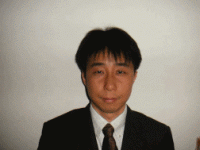
Tsuyoshi Nakaya

Tsuyoshi Nakaya
Prof. Tsuyoshi Nakaya received B.S., M.S. and Ph.D. degrees from Osaka University in 1990, 1992, and 1995. His research field is High Energy Physics, especially he is an experimental physicist in "neutrino physics".He was awarded JSPS Research Fellowships for Young Scientists from 1993 to 1994, and JSPS Postdoctoral Fellowships for Research Abroad, working for FNAL KTeV experiment at Fermi National Accelerator Laboratory (FNAL) from 1995 to 1997. As a Fellow, he studied an asymmetry between a particle and anti-particle in the neutral kaon system. And from 1997 to 1999, he joined the Enrico Fermi Institute in the University of Chicago, and worked for FNAL CDF experiment, a proton anti-proton collider experiment. As a Fermi Fellow, he built a novel trigger device, the displaced vertex trigger called SVT for CDF RUN-II. The SVT trigger is now working beautifully and collected millions of b-quark events to study a particle and anti-particle asymmetry and a search for new physics. Then he became an Instructor in 1999, and Associate Professor in 2002 in Kyoto University.
A current activity on his research is to study a property of neutrinos. After the discovery of neutrino mass and the oscillation, many theoretical and experimental activities are being conducted to explore the knowledge of neutrinos. He has worked for the K2K experiment, the first long baseline neutrino oscillation experiment in Japan. His team got the first result on the neutrino oscillation and confirmed the discovery of Super-Kamiokande by using an artificial neutrino beam. In K2K, he is a chair of conveners, and organizes the entire analysis group to get a result of the neutrino oscillation. In year 2001-2003, he worked as a leader of the new neutrino detector construction project, and successfully built the new detector, named SciBar. The SciBar detector will improve our knowledge of neutrino cross sections with a nucleus. K2K is getting close to the original goal; a confirmation and an establishment of the neutrino oscillation phenomena. Now a new neutrino experiment in Japan called "T2K" is launched. T2K have fifty times more neutrinos than K2K, and have a dramatic improvement on the sensitivities of neutrino oscillation. He also works as a convener of the near neutrino detector construction project in T2K.
Back to JSPS Home Page